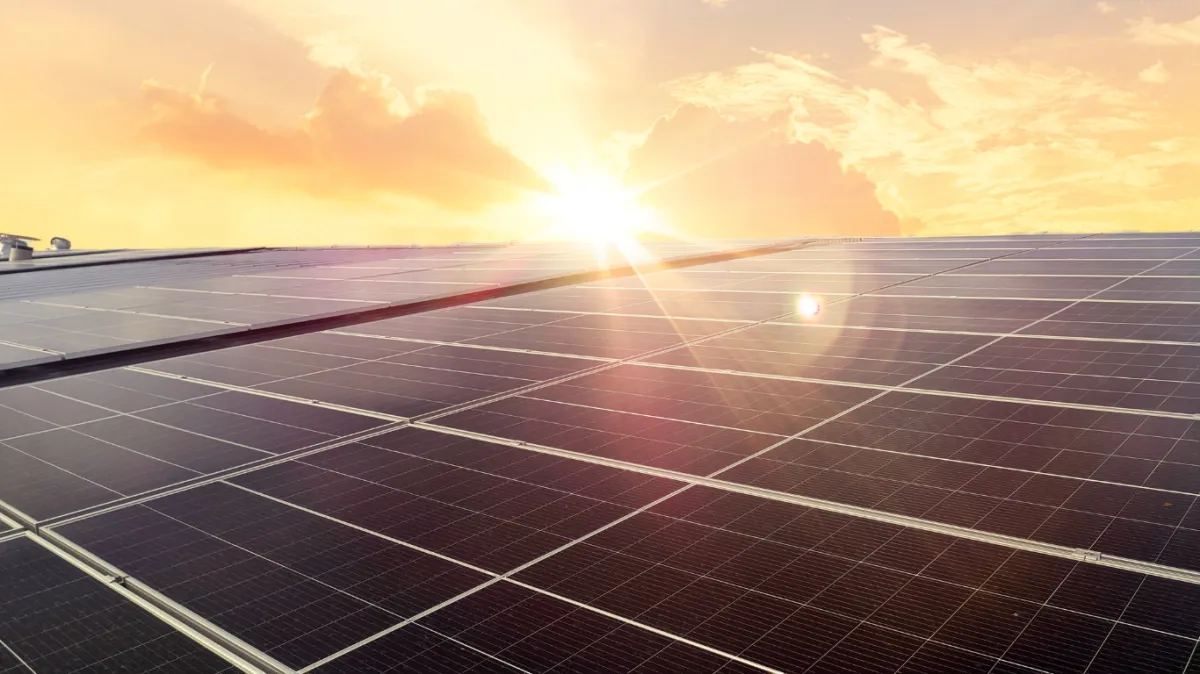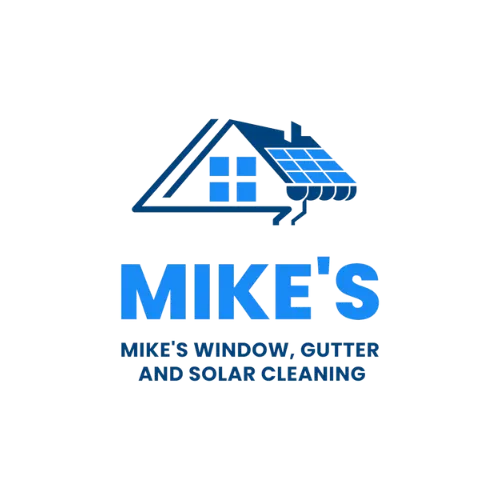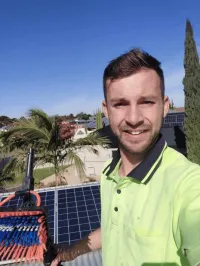Blog
Welcome to the Our Blog!
We're passionate about sharing helpful maintenance tips, industry insights, and advice for keeping your windows crystal clear, gutters flowing freely, and solar panels performing at peak efficiency. Whether you're a homeowner, renter, or business owner in Mildura and the Sunraysia region, our blog is designed to provide useful content that can help you protect your property and maximise your investments.
Explore Our Blog for Expert Property Maintenance Tips and More
From seasonal maintenance schedules to troubleshooting common issues, our blog covers everything you need to know about exterior property care. Learn when to clean your solar panels for maximum efficiency, how to spot early signs of gutter problems, and the best techniques for maintaining streak-free windows in Mildura's challenging climate.

Why Mildura Heat Waves Are Damaging Your Solar Panels (And What to Do About It)
When temperatures in Mildura soar past 40°C during our notorious summer heat waves, most of us are thinking about keeping ourselves cool—not what's happening to our solar panels. But as I've discovered while servicing solar systems across the region, extreme heat is silently damaging solar installations and costing homeowners thousands in reduced efficiency and shortened panel lifespan.
This hidden threat is particularly concerning in our region, where we regularly experience some of Australia's most extreme temperatures. Let me walk you through what happens to your solar investment during these scorching Mildura days and the preventative steps that can save you significant money in the long run.
How Extreme Heat Affects Solar Panel Performance
Most homeowners are surprised to learn that solar panels actually become less efficient as temperatures rise. While panels need sunlight to generate electricity, they don't need heat—in fact, excess heat is their enemy.
Here's what happens when your panels overheat in Mildura's summer conditions:
Immediate Efficiency Losses
When solar panels get too hot, they experience something called "temperature coefficient power loss." According to the Clean Energy Council, most panels lose between 0.3% to 0.5% of their efficiency for every degree over their rated temperature (usually 25°C).
On a 45°C day in Mildura, when panel surface temperatures can reach 70-80°C, this means your system could be producing 20-25% less electricity than its rating suggests. That's a significant drop exactly when you need cooling power the most!
Long-Term Degradation Acceleration
The heat problem goes beyond daily efficiency drops. Prolonged exposure to extreme temperatures accelerates the degradation of solar panels through:
Thermal stress causing microcracks in silicon cells
Expansion and contraction that weakens solder joints
Degradation of the protective backsheet
Breakdown of sealants allowing moisture ingress
These effects compound over time, potentially reducing your system's expected 25-30 year lifespan by several years if not properly managed.
Mike's Tip: Don't wait until you notice reduced output to address heat issues. By then, permanent damage may have already occurred to your panels.
Mildura's Unique Solar Challenges
Our region faces particular challenges that make heat management even more critical for solar panel owners:
1. Extended Heat Waves
Unlike coastal areas that benefit from cooling breezes, Mildura often experiences extended periods of extreme heat. During January and February, we frequently see week-long stretches above 40°C, giving panels no reprieve from thermal stress.
2. Low Humidity Factors
Our dry climate means less atmospheric protection from UV radiation, which compounds heat-related stress on panels. Low humidity also means less natural cooling through evaporation.
3. Dust Amplification
The combination of heat and dust—something we have plenty of—creates a particularly damaging situation. Dust buildup acts as an insulating layer, trapping even more heat against the panel surface and further reducing output.
According to Solar Victoria, regional installations like those in Mildura face more environmental stressors than urban systems, making proper maintenance even more critical.
Warning Signs Your Panels Are Heat-Stressed
How can you tell if your solar system is suffering from heat damage? Watch for these indicators:
Declining output during hot weather that exceeds normal temperature-related efficiency drops
Visible discolouration (yellowing or browning) of the panel backsheet
"Hot spots" visible on panels when viewed with a thermal camera
Degraded sealant or frame separation around panel edges
Unexpected error messages from your inverter during hot weather
If you notice any of these signs, it's important to have your system professionally assessed as soon as possible.
Your Seasonal Protection Plan for Mildura Solar Systems
Based on our experience with local installations, here's a seasonal approach to protecting your solar investment from Mildura's extreme heat:
Pre-Summer Preparation (October-November)
Professional cleaning to remove all dust and debris
Full system inspection to check for any existing heat damage
Ventilation assessment to ensure adequate airflow behind panels
Inverter check to ensure cooling systems are functioning properly
Contact us to discuss a our pre-summer protection clean here
Peak Summer Protection (December-February)
Regular cleaning to prevent dust insulation effect
Output monitoring to catch efficiency drops early
Early morning panel cleaning to help manage daily heat loads
Optional reflective treatments for severe exposure situations
Post-Summer Recovery (March-April)
Comprehensive inspection to identify any heat-related damage
Documentation of findings for warranty and insurance purposes
Remediation of any identified issues before they worsen
Performance testing to establish new baselines
Mike's Tip: Schedule your post-summer inspection for early March when heat damage is fresh and more easily identified before winter conditions mask the symptoms.
Preventative Measures That Actually Work
After helping hundreds of Mildura homeowners manage heat-related solar issues, I've found these preventative measures to be most effective:
1. Regular Professional Cleaning
Clean panels operate 3-5°C cooler than dusty ones. In Mildura's heat, this temperature difference can prevent crossing critical thresholds for heat damage.
2. Ensure Proper Panel Ventilation
Panels should have adequate air gap beneath them to allow for convective cooling. During installation, this gap should be at least 10cm. We can assess your current ventilation and recommend improvements if needed.
3. Schedule Strategic Cleaning Times
Cleaning panels early in the morning not only makes them more efficient for the day ahead but also helps manage heat load by starting with cooler surfaces.
4. Consider Specialised Treatments
For particularly exposed installations, we offer specialised heat-management treatments that can reduce surface temperatures without affecting light transmission.
The Commonwealth Scientific and Industrial Research Organisation (CSIRO) has studied the effectiveness of these measures specifically in hot, arid environments like Mildura.
Installation Factors That Affect Heat Tolerance
If you're considering a new solar installation or expanding your existing system, these factors should influence your decisions:
Panel Type Selection
Some panel technologies handle heat better than others. Generally, monocrystalline panels with lower temperature coefficients perform better in Mildura conditions.
Mounting Configuration
The mounting system and panel orientation can significantly impact heat management. A slight increase in tilt can improve both airflow and self-cleaning from occasional rain.
Inverter Placement
Inverters are also sensitive to heat. Placing them in shaded, well-ventilated areas can prevent heat-related shutdowns during crucial peak production periods.
What About DIY Solutions?
I'm often asked about DIY cooling methods for solar panels. Here's what you should know:
What Doesn't Work:
Hosing down hot panels (can cause thermal shock and cracking)
Covering panels during peak heat (defeats the purpose of having them)
Applying aftermarket coatings without professional guidance (can void warranties)
What Can Help:
Ensuring vegetation doesn't block airflow under panels
Keeping the area around your inverter clear and well-ventilated
Regular visual inspections to catch issues early
Mike's Tip: If you're comfortable and it's safe to do so, gently rinse panels with water in the early morning (never during the heat of the day) to help reduce starting temperatures. Always use a gentle spray, never a pressure washer.
The Insurance and Warranty Implications
Many homeowners don't realise that heat damage can have warranty and insurance implications:
Warranty Considerations
Most solar panel warranties include excluding clauses for environmental damage that could have been prevented through proper maintenance. Documentation of regular professional cleaning and inspection is your best protection.
Insurance Coverage
Home insurance policies vary in their coverage of solar systems. Some specifically exclude gradual damage like that caused by heat exposure, while others require proof of proper maintenance to approve claims.
The Insurance Council of Australia recommends reviewing your policy specifically for solar coverage and maintenance requirements.
Learning from Mildura's Commercial Properties
Commercial properties in our region have been quicker to implement comprehensive heat management strategies for their solar investments. Residential system owners can learn from their approach:
Scheduled maintenance contracts that ensure regular professional attention
Performance monitoring systems that flag efficiency drops early
Documentation protocols that support warranty claims
Seasonal adaptations that address changing environmental conditions
Learn about our residential packages based on commercial best practices
Final Thoughts: Heat-Proofing Your Solar Investment
Your solar system represents a significant investment that should be delivering returns for decades. In Mildura's challenging climate, protecting that investment from heat damage requires a proactive approach.
By implementing a seasonal maintenance strategy that addresses our region's specific challenges, you can:
Maintain higher efficiency during peak production months
Extend the operational lifespan of your system
Protect warranty coverage and insurance claims
Avoid costly premature replacements
Remember that every day of suboptimal performance means electricity you're paying for instead of generating. A small investment in preventative maintenance can deliver significant returns through improved performance and extended system life.
Ready to heat-proof your solar investment? Contact us today to schedule your pre-summer solar assessment and protection plan.

Keeping Mildura properties crystal clear, protected, and efficient. Mike's Window, Gutter & Solar Cleaning delivers professional service that enhances your property value and protects your investments.
Quick links
Services
© Mike's Window, Gutter and Solar Cleaning. 2025. All Rights Reserved.

